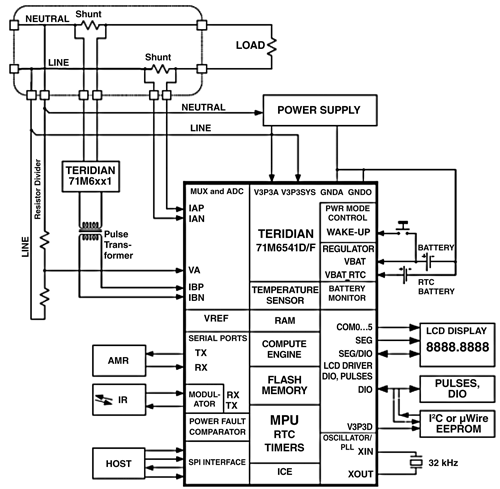Components and Systems for Smart Grids: Lots of Choices
BY MURRAY SLOVICK
The last sentence on the Mouser Smart Grid Technology home page caught my attention: “The power grid may have been created ‘dumb,’ but Mouser Electronics offers the newest products and tools to help raise its IQ.”
Indeed. The electric utility industry’s goal to incorporate information and communications technology into electricity generation, delivery and consumption has spawned an ecosystem of components and systems for engineers to choose from. Let’s look at some of these.
Analog and digital parts
“Smart meter” utility measurement devices perform remote readings and communicate the information back to the utility by means of precise analog metrology circuits, embedded processors and two-way data links. These energy measurement systems require voltage and current sensors, an AFE to interface with these sensors and an MCU to perform energy measurement calculations. The results can be displayed on an LCD screen or sent over a serial bus to another device for wireless communication.

Smart meters also have to use on-chip, high-accuracy ADCs as well as a range of support elements to provide security and accuracy. Major semiconductor players such as Freescale, Maxim, Microchip, NXP, STMicroelectronics and Texas Instruments offer a variety of metrology ICs designed to remove the complexities of metrology development, enabling designers to focus on product differentiating features.
Network infrastructure products
The smart grid is a network overlaid on top of the existing power infrastructure. Smart meters can use low-power wireless, cellular networks or even the Internet to pass meter readings back to a central collection point. In the home, smart grid implementations can employ powerline communications (PLC) technologies operating over a Home Area Network (HAN). The HAN also allows HVAC systems and other household appliances to communicate with the smart meter, as well as the utility.
Most low-power wireless WAN traffic will be transported using the ZigBee standard or other protocols based on the IEEE 802.15.4 physical specification for unlicensed ISM radio bands. On the Mouser website engineers will find RF transceivers and modules or development kits for software stacks such as ZigBee PRO and 6LoWPAN, as well as EEPROM and flash memory parts to support memory expansion for data logging and remote firmware upgrades.
Renewable energy solutions
Access to renewable energy sources means that the smart grid can operate more efficiently to meet growing demands for energy. Houses or communities can draw from the grid at off-peak hours when energy prices are low, or generate their own energy at periods of high demand.
One of the major challenges posed by power supply systems such as photovoltaic and wind power generation is that they are dependent on the weather and are thus inconsistent. Power companies must therefore constantly monitor and adjust the power levels (that is, voltage, current, phase angle) flowing in power lines. To monitor the voltage fluctuations in the grid and support the advanced operation of the smart grid power distribution network, utilities install intelligent automatic load break switches equipped with integrated voltage sensors. These switches consist of a high-voltage capacitor and a low-voltage capacitor connected in parallel. High-voltage ceramic capacitors from suppliers such as TDK Epcos are a key component in the switch and are used as voltage or potential dividing capacitors.
Driven by new environmental and conservation concerns and regulations, the market for energy, water, and gas metering systems is rapidly changing. As such, specific design requirements will vary, largely steered by the needs of the devices and applications associated with each sub-system. Engineers can use Mouser’s Smart Grid Technology site to find the latest product information via easy-to-use block diagram navigation. ■
Advertisement
Learn more about Mouser Electronics





